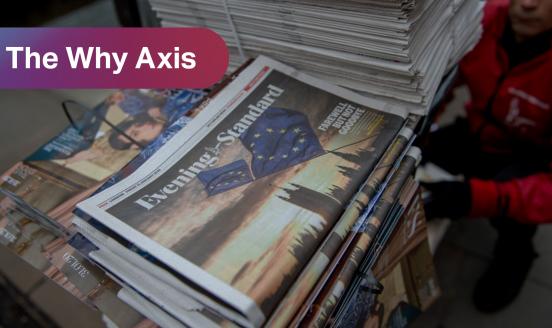The ECB winter of discontent
It was the last meeting before Christmas at the ECB, as well as the first in the new premises and the last with a non-rotating voting system. It ended
It was the last meeting before Christmas at the ECB, as well as the first in the new premises and the last with a non-rotating voting system. It ended with no action, a controversial twist in the language and a sense of dissenting views on QE. The lack of action was largely to be expected. The ECB has in fact pledged a lot of reputational capital on the measures adopted so far, and moving a step forward before having had the chance to assess their effectiveness would be inconsistent with the narrative offered so far.
projections for GDP growth for 2015 and 2016 have been lowered to 1.0% and 1.5%, down from 1.6% and 1.9%
Yet, the revision to the ECB’s staff forecasts has been substantial. The median projections for GDP growth for 2015 and 2016 have been lowered to 1.0% and 1.5%, down from 1.6% and 1.9%. The median projections for HICP inflation also worsened, and inflation is now forecast at only 0.7% in 2015 and 1.3% in 2016. And since the cut off date for forecasts was 13 November, these numbers do not yet factor in the latest downward shock to oil prices. As of the 2nd of December 2014, oil price futures implied that the price of Brent crude oil would fall to USD 73.2 in 2015 and rise to USD 78.1 in 2016, i.e. to levels that would be14.5% and 11.7% lower than those entailed in the baseline projection. The ECB estimated that the impact of a lower than expected oil price path would cause euro area HICP inflation to reach about 0.4 percentage point below the baseline projection for 2015 and 0.1 percentage point below the baseline projection for 2016.
Therefore, the outlook is gloomy and the risk related to lower oil prices looks quite substantial, especially for 2015. The oil price could eventually be the ultimate shock needed to trigger further action. ECB president Draghi stated that the ECB will closely follow these developments and that the appropriateness of existing measures will be reassessed “early next year”, when further easing could be unavoidable. Whether “early” means “as early as the next meeting” (January 22nd) will most likely depend on the actual take up of the second TLTRO auction on which the ECB has repeatedly tried to sound positive (11th December) and on the numbers achieved under the CBPP3 but most importantly the ABSPP, which largely disappointed with less than one billion purchased in its first week of operations.
unanimous commitment exists within the Governing Council to using additional unconventional measures to stir the balance sheet
It was reiterated that unanimous commitment exists within the Governing Council to using additional unconventional measures to stir the balance sheet, but a number of signals in today’s meeting suggested that the controversy about the definition of “further measures” is still alive and binding. Draghi said clearly that sovereign QE would fall within the ECB’s mandate, leaving the options on the table quite open (to everything except gold and foreign-denominated assets). With respect to the size of the balance sheet increase – which had been the main focus of the meeting in November – there has been an interesting linguistic twist in the introductory statement, where the ECB balance sheet is no longer “expected” to increase up to the level it had “in early 2012”, but it is now “intended” to do so. This adds linguistic dovishness and is consistent with the overall message that the ECB is ready to ease more. But in the Q&A Draghi clarified that this definition should still be considered different (weaker) than an actual target and hat the change in the language could not be agreed unanimously. The sense of caution stemming from these words was further reinforced by a somewhat odd clarification, from Vice President Constancio, about the personal nature of his recent comments about QE.
In sum, the takeaway from today’s meeting seems to be that the need to do more for the ECB is more pressing than ever, while at the same time internal constraints are still far from eased. Despite the ECB president explicitly saying that unanimity would not be needed in order to proceed with QE, the other signs discussed above seem to point to significant internal divergences still strongly standing on the way of a “comfortable majority”.
One way to make the process more palatable to the internal opposition – as advocated here some time ago – would be to start QE by buying those assets that are the closest to a euro area-wide government bond, i.e. bonds issued by European supranational institutions. The total of bonds available is around €490 billion, with slightly more than €200 billion for EFSF/ESM, €60 billion for EU and €200 billion for EIB. The potential pool of EIB bonds could increase, during 2015, as the recently announced Juncker plan foresees the issuance of 60 billion in new AAA rated EIB bonds, backed by the 21 billion put in the European Fund for Strategic Investment (EFSI).
And in fact, new EIB bonds are not the only (and certainly not the most interesting) EIB product that the ECB could consider investing in. Juncker’s plan in fact includes a leg directly aimed at supporting risk finance for SMEs and mid-cap companies across Europe, relying on (and scaling up) the already existing European Investment Fund (EIF). This could be done – according to the plan – by providing higher amounts of direct equity or additional guarantees for high-quality securitisation of SME loans. And these securitized product could be of particular interest to the ECB for a number of reasons: (i) they would be representative of underlying new loans that would most likely be subject to accurate screening, as part of this EIB/Commission plan, and therefore potentially less risky than a random pre-existing ABS (ii) they would be ultimately be backed by a European guarantee (the 16 billion backstop buffer), which could allow the ECB to invest in slightly riskier tranches (something the ECB has been trying to achieve on normal ABS asking for national government guarantees, but still with no success). Defaults on ABS in Europe have been very low during the financial crisis – ranging between 0.6-1.5 percent on average, against 9.3-18.4 percent for US securiisations – but the two abovementioned arguments would make them even less risky.
One problem is timing, as the investment plan is still in its infancy whereas the ECB could need to act very early next year. But based on the experience of other central banks, programmes of asset buying stretch over a fairly long horizon. Any such ECB engagement would have the obvious effect of leveraging the credibility of the plan in the eyes of private investors and therefore increasing the chances that more private investment would effectively opt. This would increase the likelihood that the plan’s 315 billion target is reached, and that the monetary stimulus is complemented by other policies moving in a synergic, rather than conflicting, direction.



